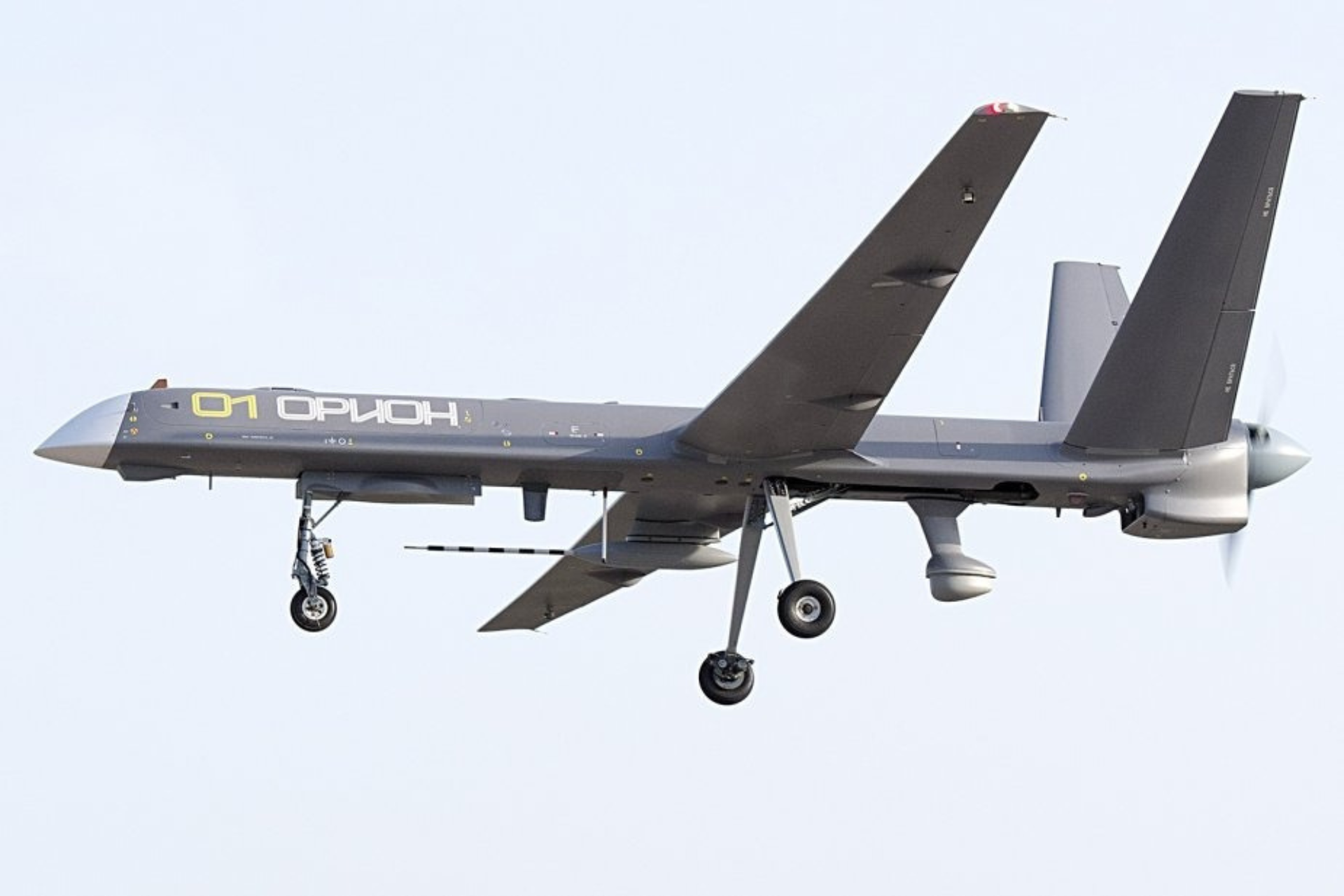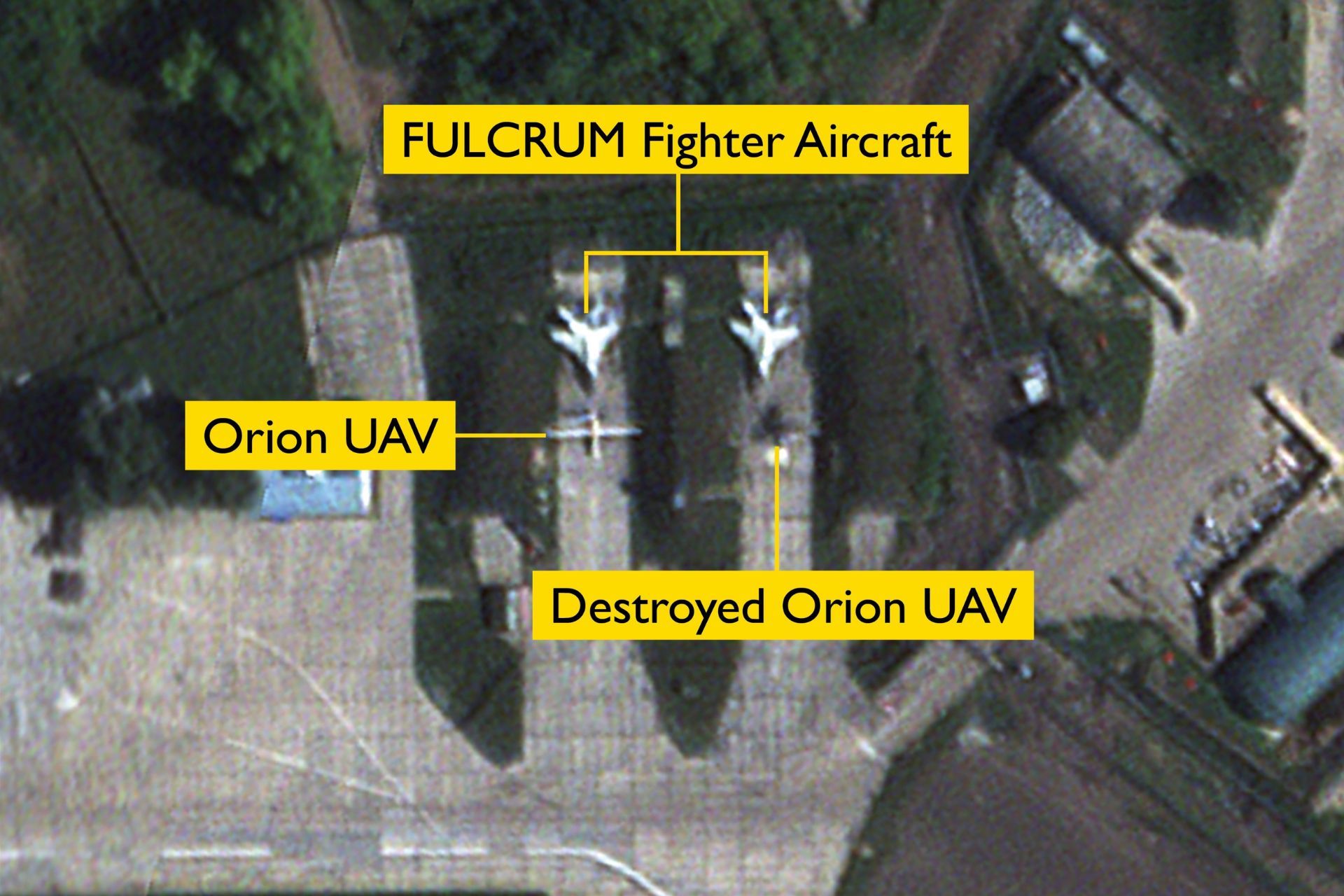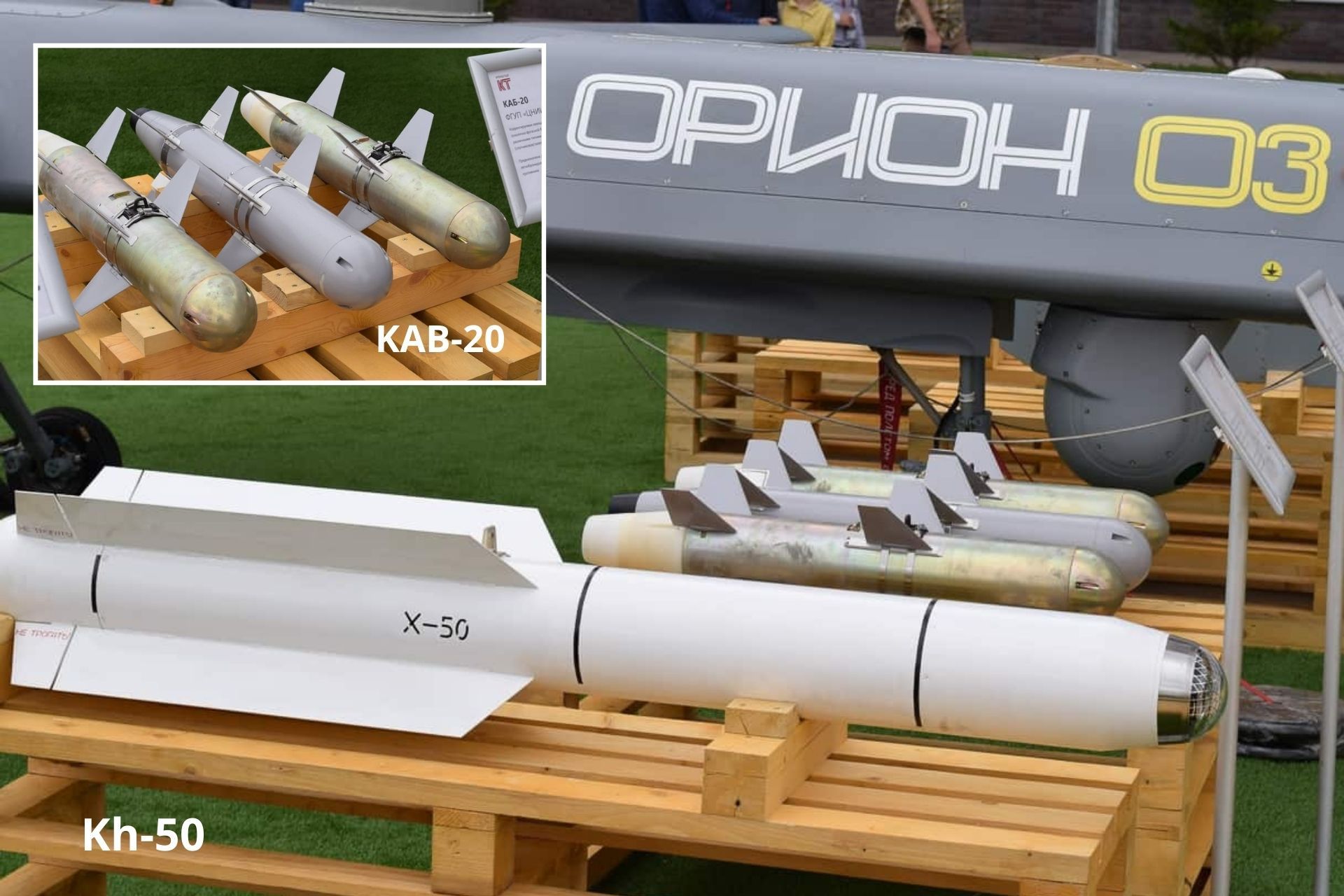Breaking News
British Intelligence Reveals Destruction of a Russian ORION UAV in Kursk Region.
On August 14, 2024, the Ukrainian Armed Forces launched a large-scale attack on the Khalino military airfield, located in Russia's Kursk region. This assault, considered one of the most significant attacks on Russian military bases since the beginning of the full-scale invasion, targeted several critical military infrastructures. According to British Intelligence, satellite images reveal the destruction of an Orion drone, a medium-altitude, long-endurance (MALE) UAV.
Follow Army Recognition on Google News at this link

This Orion UAV, introduced by the Russian military in 2020, is primarily used for reconnaissance, surveillance, and intelligence missions, although it can also be equipped with guided munitions (Picture source: Kronshtadt Group)
The Russian Orion drone is an unmanned aerial vehicle (UAV) designed for reconnaissance and ground attack missions. It was developed for the Russian Air Force, Navy, and Special Forces, and it also has a civilian modification. The detailed military characteristics of the Orion remain classified, but some basic information on the civilian version has been disclosed by its developers, Kronstadt Technologies.
The Orion comes in several versions. The original version, simply known as Orion, also has an export variant called Orion-E. Additionally, the Orion-2, also named Helios, is a larger version classified as a high-altitude, long-endurance (HALE) UAV, with a larger payload capacity. The Inokhodets-RU, also known as Sirius, is an upgraded variant of the Orion with a different design and the addition of a second engine, increasing its range and payload capacity.
The original Orion measures 8 meters in length, with a wingspan of 16 meters and a height of 2 meters. It weighs 500 kg when empty, with a maximum takeoff weight of 1,000 kg. The Orion-2 and Sirius are larger, with a wingspan reaching 30 meters and a maximum takeoff weight of 5 tons. For example, the Sirius can carry a maximum payload of 450 kg, fly at an altitude of 12,000 meters, and has an endurance of 40 hours.

Satellite images taken after the attack confirmed the destruction of an Orion UAV (Picture source: British MoD)
The Orion is powered by a conventional engine of unknown specifications, driving a two-bladed propeller at the rear of the fuselage. This pusher configuration allows the drone to reach a maximum speed of 200 km/h, with a range of 700 km and a maximum altitude of 7,500 meters. The Sirius, on the other hand, is equipped with two engines, providing improved performance compared to the original model.
The Orion can carry a payload of 200 kg, distributed across four hardpoints. It can be armed with Kh-50 guided missiles or KB-20 guided bombs. The Kh-50 missile, developed by several Russian companies, measures 1.8 meters in length and weighs 50 kg. It is designed for precision strikes with a high-explosive fragmentation warhead. The KB-20 guided bomb is lighter, weighing 21 kg, and is intended to engage unarmored targets.
Satellite images taken after the attack confirmed the destruction of an Orion UAV. This drone, introduced by the Russian military in 2020, is primarily used for reconnaissance, surveillance, and intelligence missions, although it can also be equipped with guided munitions. Additionally, a MiG-29 Fulcrum fighter jet on the site was reportedly hit, and a second Orion drone may have been damaged.

The Orion can be armed with Kh-50 guided missiles or KB-20 guided bombs (Picture source: Russian MoD)
This attack, carried out jointly by Ukraine's Security Service, Armed Forces, and Main Intelligence Directorate, marks a turning point in Ukrainian military operations on Russian territory. Ukrainian long-range drones played a central role in this offensive, highlighting the ongoing escalation of the conflict and the expansion of Ukraine's offensive capabilities. British authorities have closely monitored these developments, providing their analysis of the strategic impact of this operation.
The attack on the Khalino airfield demonstrates Ukraine's growing ability to strike targets deep within Russian territory. On Tuesday, August 27, the Ukrainian President once again called on Western leaders to authorize strikes on military targets further into Russian territory.


























